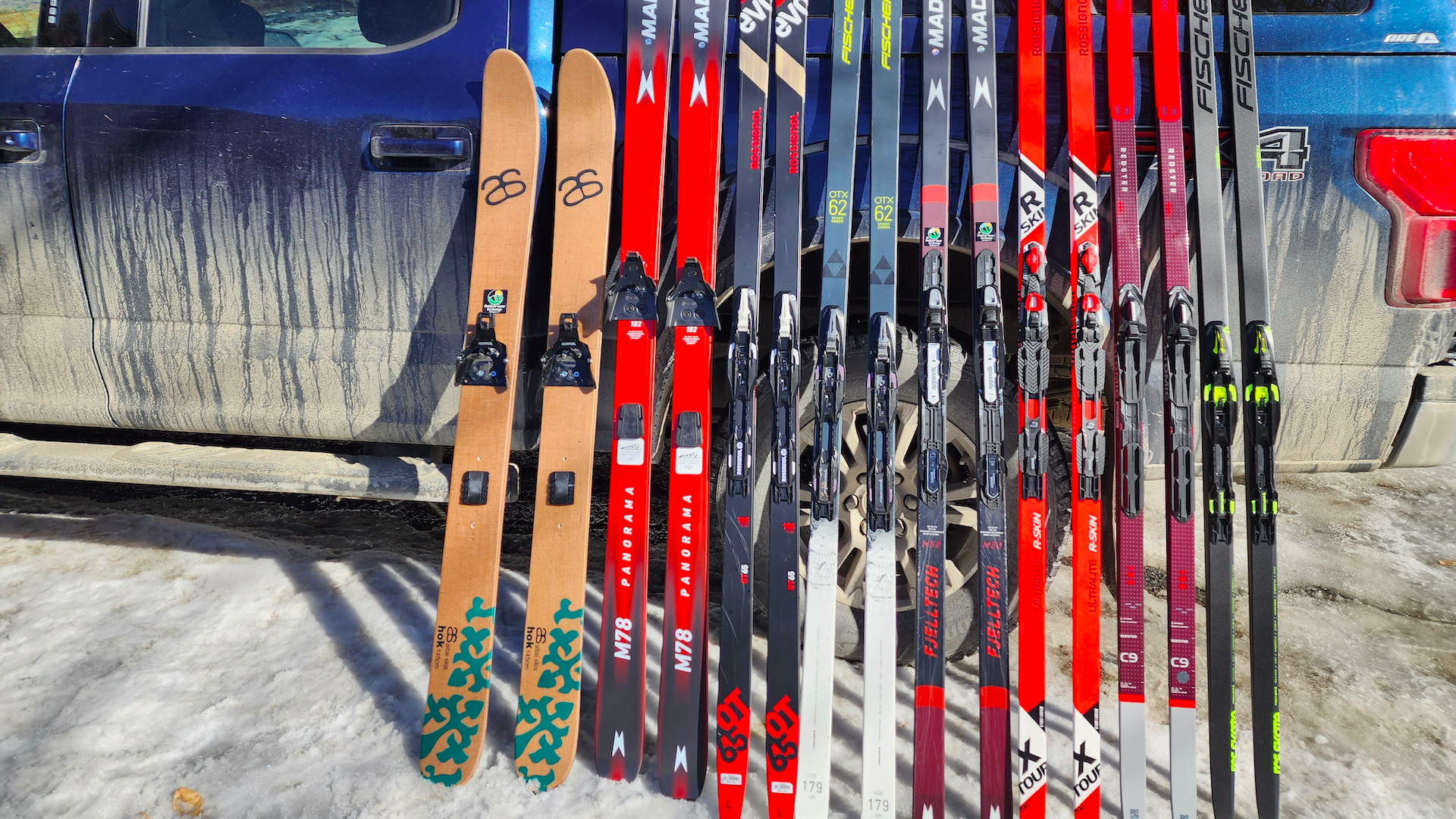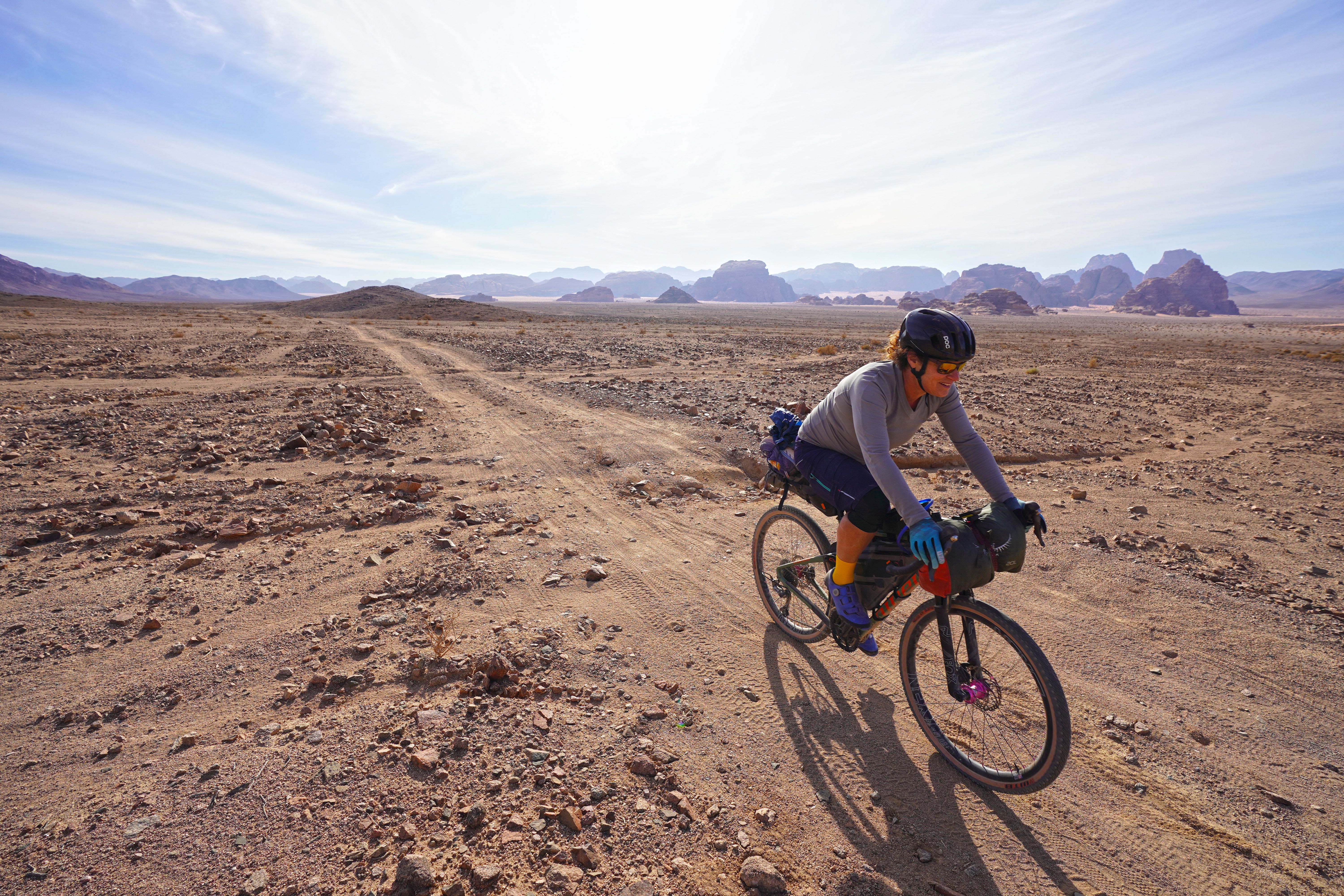Advnture Verdict
A super-fun and versatile, go-anywhere, do-anything ski that opens up all sorts of adventure possibilities right on your doorstep when the white stuff starts to settle in for the season. The Altai Hoks are an essential inclusion in your quiver of skis if you love to explore woods and trails throughout winter.
Pros
- +
Great for exploring
- +
Simple to use
- +
Extremely versatile
Cons
- -
Don’t turn as well as backcountry touring skis
- -
Unclear how easy it is to replace skins
You can trust Advnture
Altai Hok: first impressions
So why Altai Hok? Well, Hok, which is pronounced 'hawk', is the word for ski used by the Tuwa people who live, and ski, in the Altai Mountains. So they should know a thing or two about crafting the best cross country skis.
• List price: $250 (US) / not officially available in the UK
• Weight (per 145cm pair): 2.38kg / 5lb 3.9oz
• Base: Permanent skin over a standard ski base
• Edges: Full metal
• Sidecut: 124 / 110 / 122
• Sizes: 99cm (kids), 125,cm, 145cm
A wide, short, metal-edged ski with a permanent skin on the bottom, Altai’s Hoks (available direct from Altai Skis) are made for finding your own adventure in the woods, meadows and anywhere else you want to go.
They provide the turnability and float of a backcountry touring ski with the ease and convenience of a waxless Nordic ski (see also: Choosing cross country skis). They can be mounted with either a universal binding that can be used with any winter boot, or with a 75mm three-pin binding for better performance. An adapter plate makes these compatible with Rottefella NNN BC and Solomon BC bindings.
Because of the width of the ski, it climbs better than most other waxless Nordic skis. The Hok comes in three sizes: 125 cm, 145 cm, and a kids’ version, the Balla Hok, which is 99cm. The 145 version is best for skiers who scout the woods for untracked downhills; it has the most float and glide. The 125 is more maneuverable (it’s practically a snowshoe substitute) and it’s easier to ski with a light boot or universal binding.
Altai Hok: on the slopes

I’m lucky enough to own a lot of skis, and these are the ones I use the most. I wear the Hoks to cruise around the woods behind my house in winter to exercise the dogs. And I wear them to ski mountain bike trails all through the white season.
The Hoks are skis that facilitate all sorts of adventures (so make sure you know your cross country skiing techniques for all types of terrain and snow). They make slopes that would be boring on a full alpine touring ski loads of fun, but they’ve got more stability and better uphill climbing capabilities than other Nordic skis. They can also go anywhere, and they’re fun even when there’s little snow on the ground.
Vermont-based writer, photographer and adventurer, Berne reports on hiking, biking, skiing, overlanding, travel, climbing and kayaking for category-leading publications in the U.S., Europe and beyond. In the field, she’s been asked to deliver a herd of llamas to a Bolivian mountaintop corral, had first fat-biking descents in Alaska, helped establish East Greenland’s first sport climbing and biked the length of Jordan. She’s worked to help brands clean up their materials and manufacturing, and has had guns pulled on her in at least three continents.


